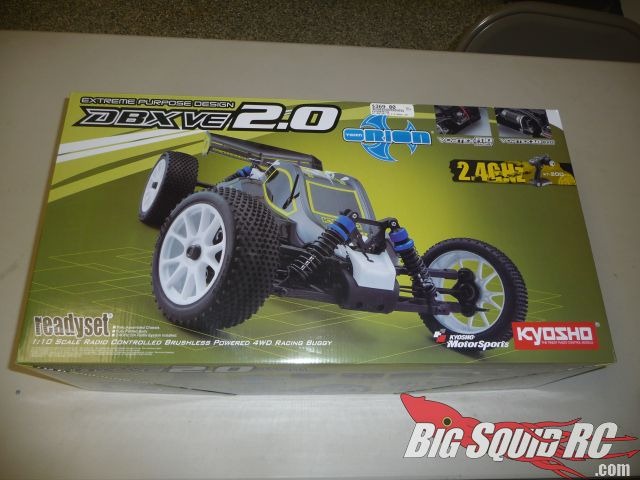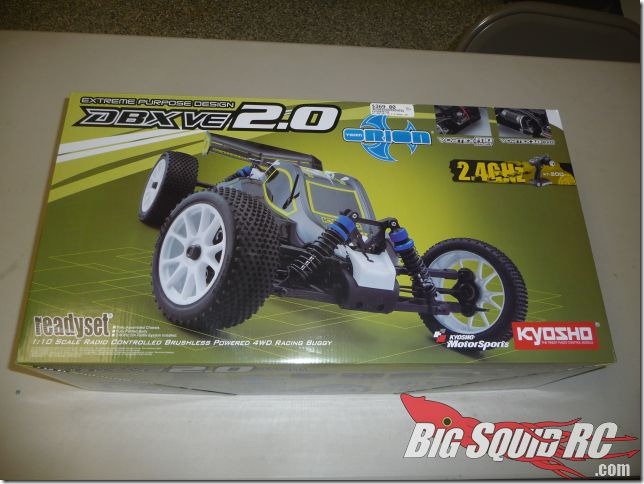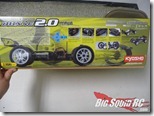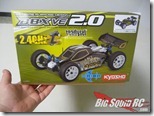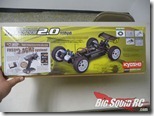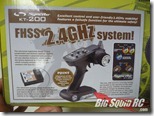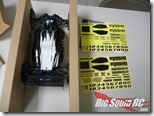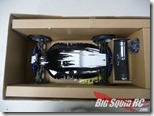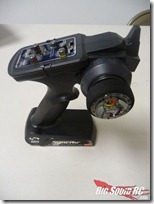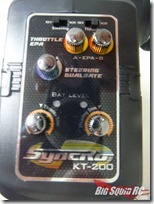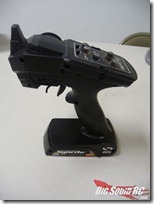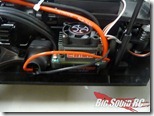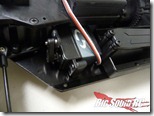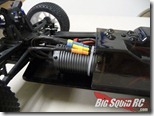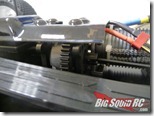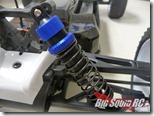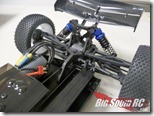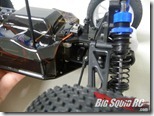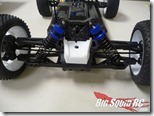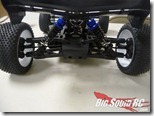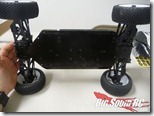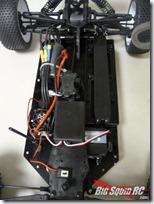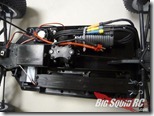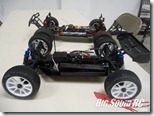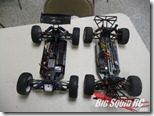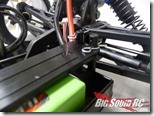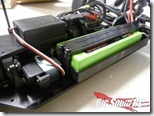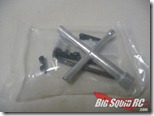Kyosho DBX VE 2.0 Buggy unboxing
The review of the Kyosho DBX VE 2.0 buggy has begun but until it’s done, this unboxing should hold you over. I know it isn’t a short course but on paper, the closest thing I want to compare this to on “features for the price” is the Traxxas Slash 4×4. Given that, at $369.99 street it appears it’ll be a bargain. Let’s take a closer look at what is inside the box.
The buggy is fully assembled and ready to go. It includes two sets of decals (yellow and gold) to dress up the buggy as you like.
Under the body is a protective cover the shields the electronics from dust and debris. It should help with a few small splashes but this is not advertised as a waterproof model.
Tons of pics and a video after the break…
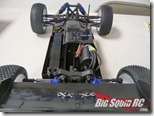
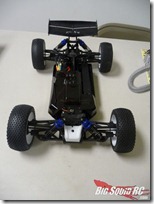
Kyosho’s KT-200 transmitter is included. It is a 2.4ghz FHSS radio that is powered by 4 AA batteries and remains light in weight. Every time I see picture of this radio I was wondering how that top panel would look. Having seen it in person it looks nicer then I expected. Much nicer then say the panel on the Helion TX.
The brushless system is a 540 size Orion system that accepts 6-7 cell NiMh and 2S-3S Lipo. The steering servo is a digital unit that appears to have a metal body case.
The buggy includes sealed differentials including the center unit. The shocks have aluminum caps and aluminum adjusters for the threaded shock bodies.
As we look at the front and rear end of the car, you’ll see that Kyosho has designed this buggy so there is interchangeability in the parts. In the suspension, the top arm will work on all 4 corners. The same holds true for the bottom arm and the knuckles. The servo saver is adjustable and all drive-line components are dog bones.
A beefy steel chassis holds it all together. Kyosho is using Phillips head screws on this one. At the top is a weather proof box for the receiver and the system is wired to accept Deans connectors.
In terms of size comparison, Kyosho doesn’t really claim this is an 1:8th scale buggy but it does use 1:8th scale wheels and tires. Pictured below is the DBX VE 2.0 next to a 4wd short course truck.
The battery tray uses two body pins to fasten the battery. In the tool bag, a spacer is included that allows you to run thicker battery packs without the need for an aftermarket battery brace.
The day of the unboxing we had to give the buggy a test run. Steve over at HobbyTown USA in Orland Park did a video unboxing and then joined me outside as we determined what top speed was on the stock setup with a 3s lipo. Finally, check out the end of the video as we do our Big Squid backflip tests! I’m thinking 40+ feet. What do you think?

